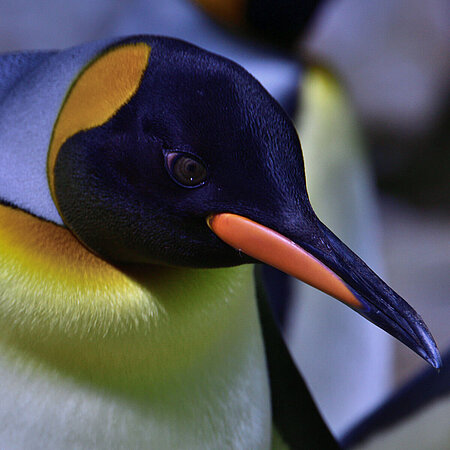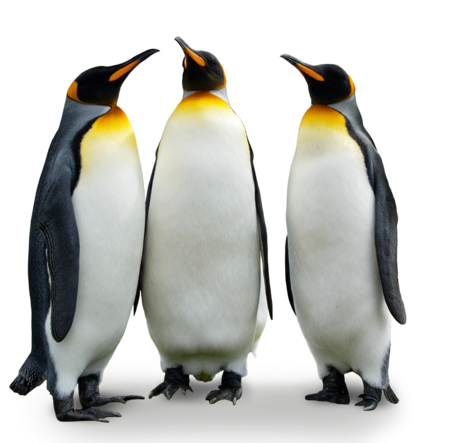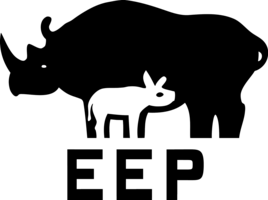King penguin
Aptenodytes patagonicus

- Family
- Spheniscidae (penguins)
- Weight
- ca. 12 kg
- Habitat
- Subantarctic snowy landscapes, sparsely vegetated coastal regions, spends a lot of time in the sea
Egg transfer
King penguins do not build nests for their offspring. Instead they incubate their egg by holding it on their feet under a specially adapted fold of abdominal skin. The shell of the egg is relatively thick to minimise risk of breakage: the female and male roll the egg to each other’s feet when the parents take turns incubating.

Juvenile plumage
King penguin chicks have a warm, brown down of feathers. Only after moulting into their juvenile plumage will they gain the typical black-and-white penguin colouration. It can take up to three years for the yellow markings on the juvenile’s head and neck to reach the colour intensity of adults.
Penguins use their tail to support themselves when waddling. To go even faster, they can toboggan over ice and snow by sliding on their stomach.
Distribution


Hellabrunn Zoo participates in the European Endangered Species Programmes